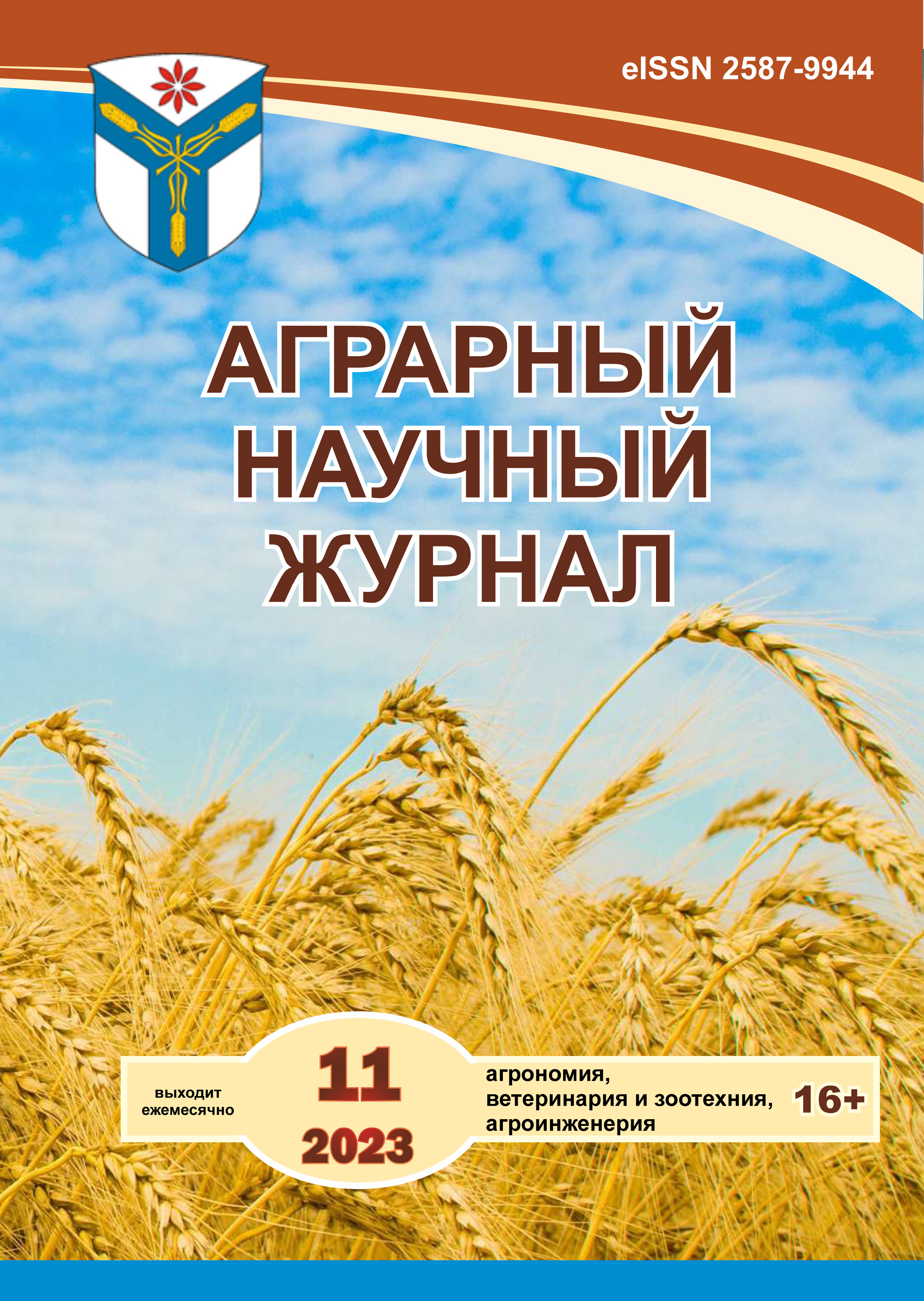Magpie cleaning device for cleaning the pre-chamber of the pumping station from sediment
DOI:
https://doi.org/10.28983/asj.y2023i11pp199-204Keywords:
irrigation system, pumping station, an advance chamber, water treatment device, conveyor, sediment species composition, sediment mass, irrigation season periodAbstract
The purpose of the work is to develop, test and evaluate the efficiency of the water treatment device at the water intake of the pumping station. The article provides an analysis of the existing designs of water intakes at pumping stations of irrigation systems of the Saratov region. A brief description of the device and operation of the developed conveyor-type water treatment device mounted on the water intake of the pumping station No. 4 of the Engels OS is given. Studies have established the species composition and mass of sediment entering the grid during the irrigation period. When filling the channel (May 20), a large mass of sediment in the form of branches, stems and leaves of plants was observed in the ante-chamber. At the first watering, the mass of the removed dry sediment is small ? 2-3 kg. With the second watering, the weight of the sediment increases to 14 kg. The maximum mass of sediment was removed from the pre-chamber during the third and fourth watering (July, August), and reached 17, 21 and 24 kg. In addition to branches, stems and leaves, a large amount of algae, mud, duckweed and a small amount of household garbage were observed in it. The cleaning time of the ante-chamber in front of the conveyor varied from 10 to 60 minutes. The developed water treatment device showed reliable operation, reduced labor costs for cleaning the ante-chamber and ensured the uninterrupted operation of the pumping station during the irrigation period. Proposals for further improvement of the water purification device have been developed.
Downloads
References
Нагорный В.А. Основы водосбережения при орошении в Саратовской области. Саратов, 2001. 153 с.
Мелиоративный комплекс Российской Федерации: информ. издание. М.: ФГБНУ «Росинформагротех», 2020. 304 с.
Провести исследования, изготовить и испытать сороочистное устройство транспортерного типа на водозаборе насосной станции: отчет о НИР по теме 2.2.2 / ВолжНИИГиМ. Энгельс, 2022. 57 с.
Багров М.И., Кружилин И.П. Оросительные системы и их эксплуатация. М., 1978.
Касицин В.С., Разумовский Л.А. Устройство для очистки воды от сора // Гидротехника и мелиорация. 1985. № 12. С. 21-26.
Абдразаков Ф. К., Логашов Д. В. Анализ работы насосных станций Комсомольской и Приволжской оросительных систем, недостатки и пути их совершенствования // Аграрный научный журнал. 2020. № 6. С. 67-71.
Горбачева М.П. Очистка оросительных каналов от растительного мусора // «Вавиловские чтения ? 2005»: материалы Всерос. науч.-практ. конф., посвящ. 118-й годовщине со дня рождения академика Н. И. Вавилова. Саратов, 2005. С. 39-40.
Рыжко Н.Ф. Совершенствование дождеобразующих устройств для многоопорных дождевальных машин. Саратов, 2009. 176 с.
Шигаев В.И., Угнавый В.Л. Влияние качества оросительной воды на работу дождевальной машины «Фрегат» // Совершенствование мелиоративных систем способов и техники полива сельскохозяйственных культур в Поволжье: сб. науч. тр. М., 1977. С. 96-102.
Downloads
Published
Issue
Section
License
Copyright (c) 2023 The Agrarian Scientific Journal

This work is licensed under a Creative Commons Attribution-NonCommercial-NoDerivatives 4.0 International License.








